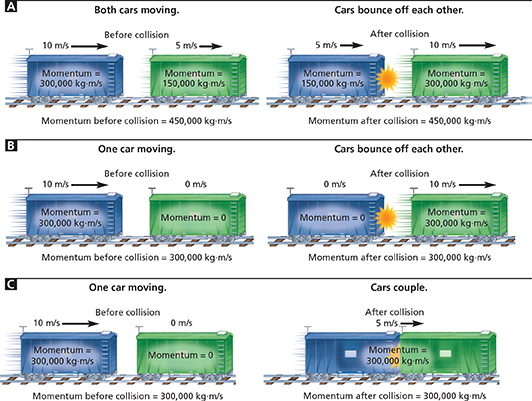Conservation of Momentum
What happens to momentum when objects collide? Look at the collisions in Figure 17. Under certain conditions, collisions obey the law of conservation of momentum. In physics, the word conservation means that something has a constant value. That is, conservation of momentum means that momentum does not increase or decrease.
Imagine two trains colliding as shown in Figure 17A. If the two cars are part of a closed system, then momentum is conserved. A closed system means other objects and forces cannot enter or leave a system. Objects within the system, however, can exert forces on one another. According to the law of conservation of momentum, if no net force acts on a system, then the total momentum of the system does not change.
Thus, if we consider the two train cars as a closed system, the cars can exert forces on each other. But overall, the total momentum of the system is conserved.  In a closed system, the loss of momentum of one object equals the gain in momentum of another object— momentum is conserved.
In a closed system, the loss of momentum of one object equals the gain in momentum of another object— momentum is conserved.

Figure 17 The different collisions between equal-mass train cars are shown above. In each collision, the total momentum of the train cars does not change—momentum is conserved. Calculating What is the mass of each train car?





